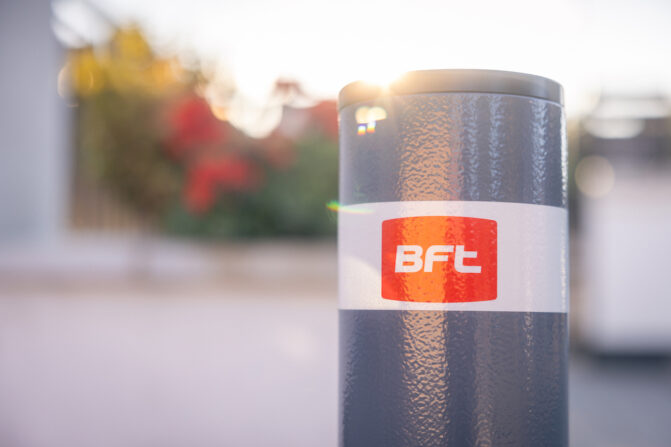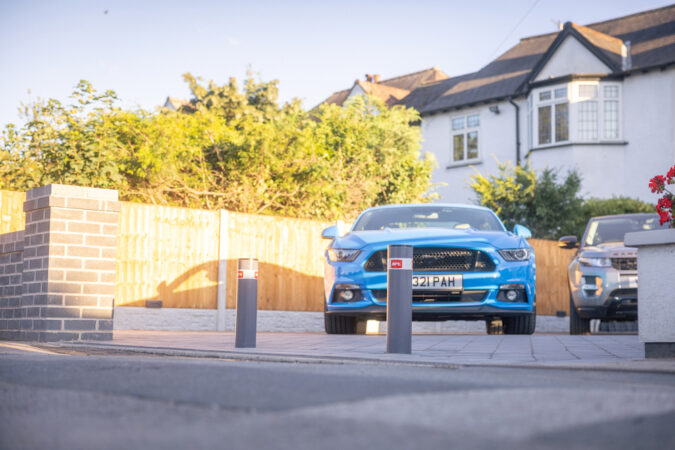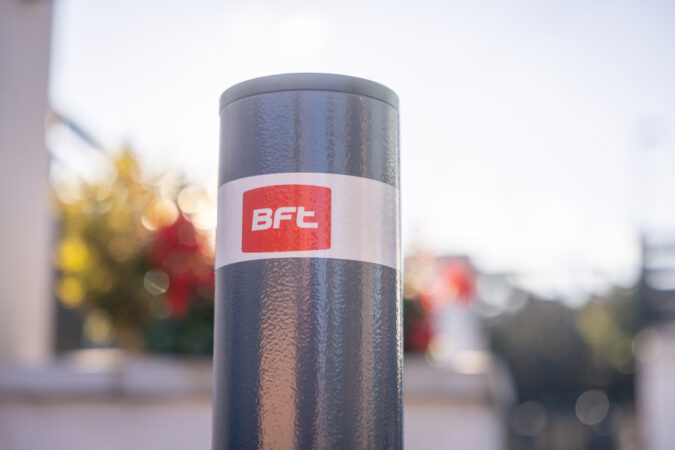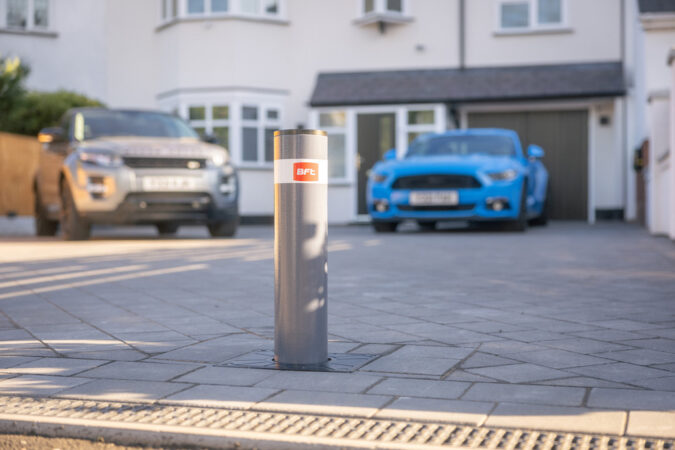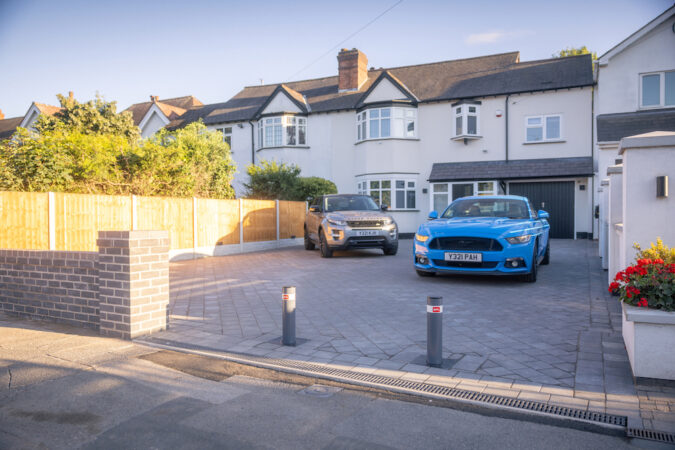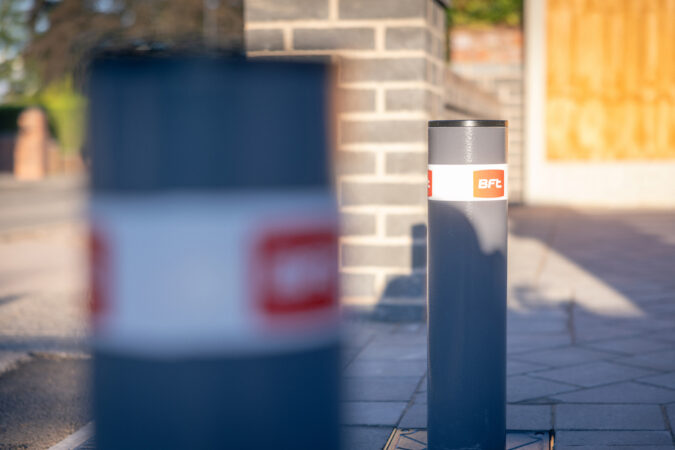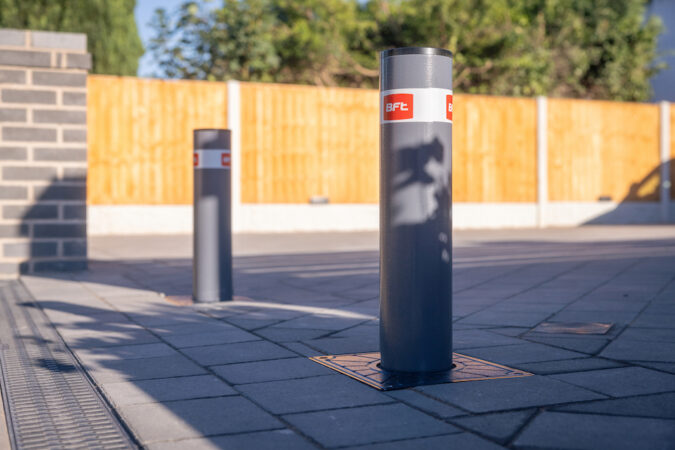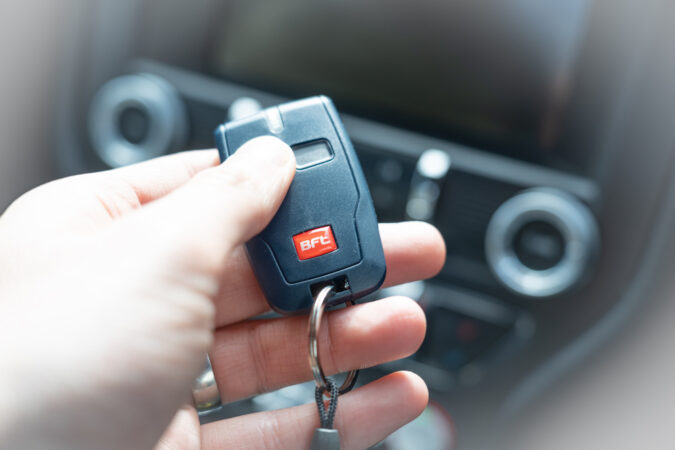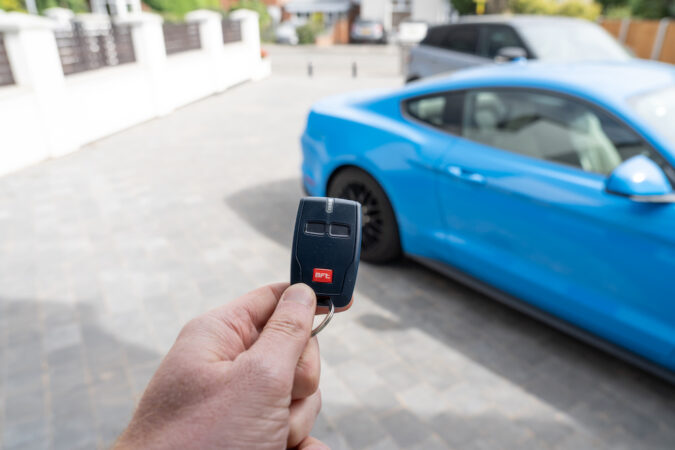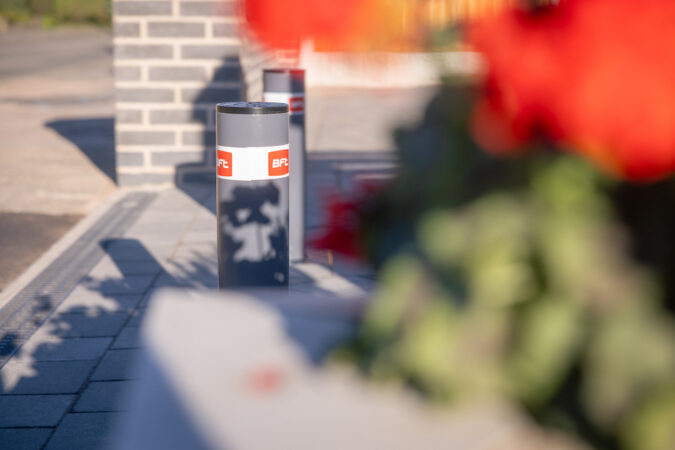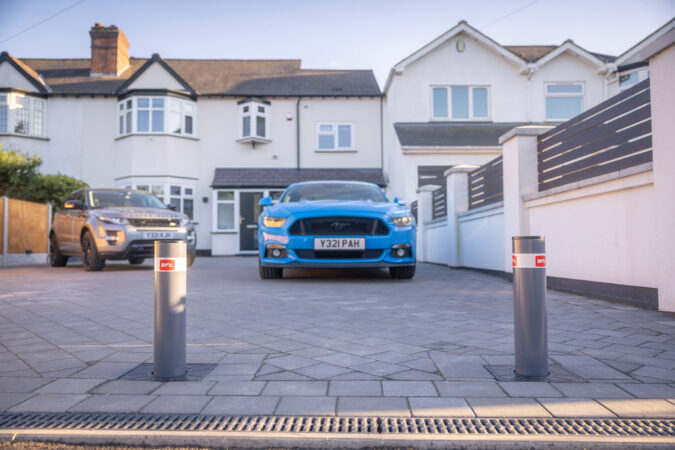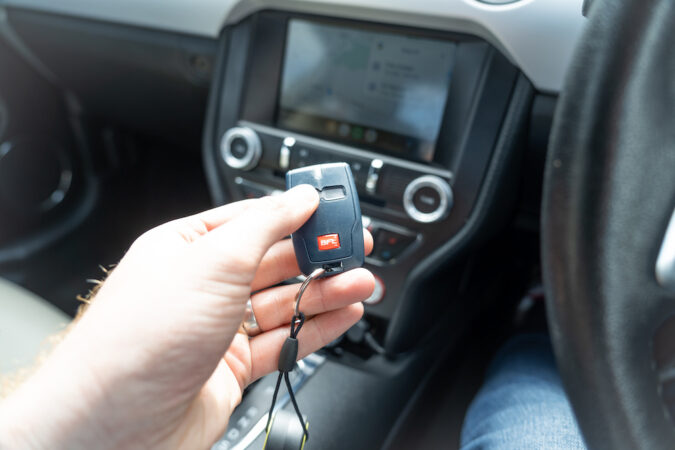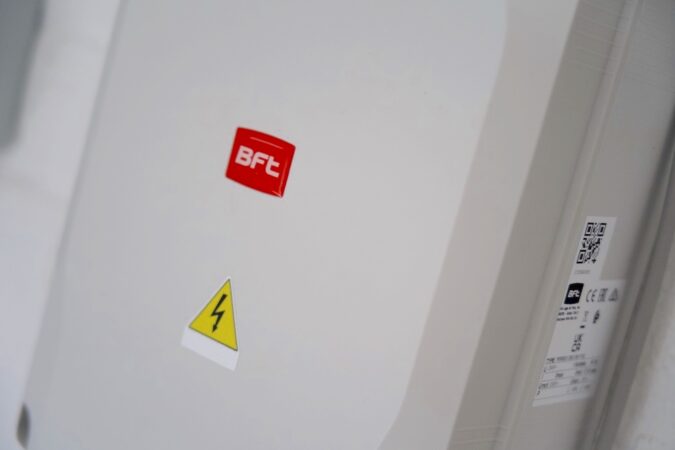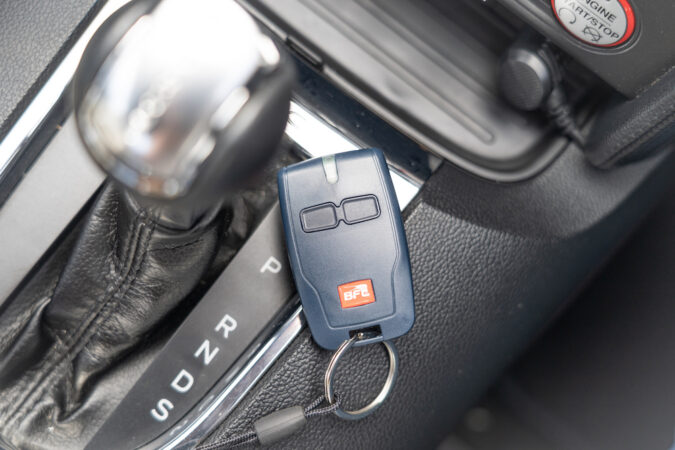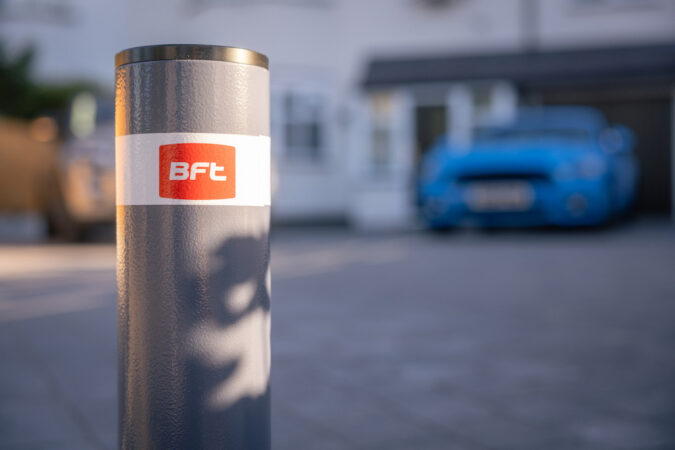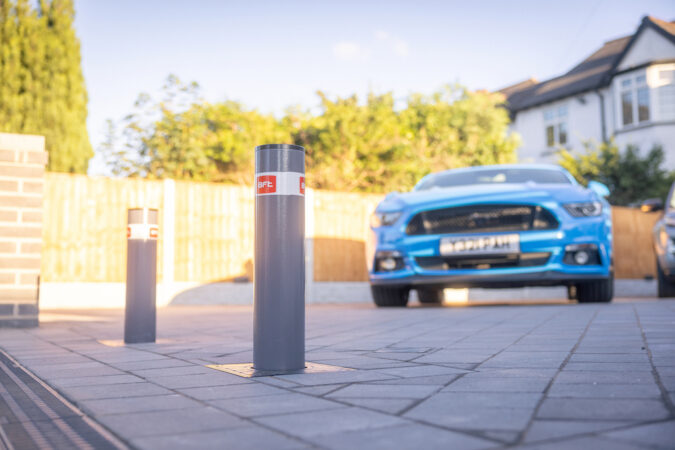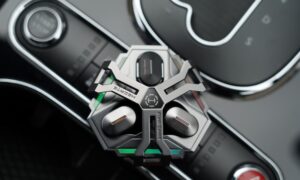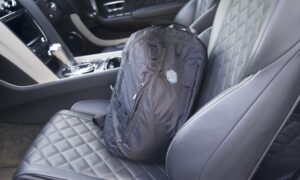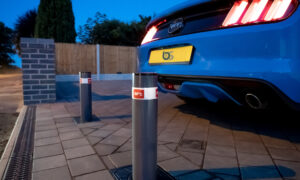Car security is a constant and endless game of cat-and-mouse between car manufacturers and criminals. On the one hand, carmakers are trying their best to improve in-car theft deterrents and apply all the latest security measures possible. Yet, criminals and car thieves are also working hard to find ways of bypassing and hacking around them. So, where do products like the BFT STOPPY B 115/500 come into play?
Well, despite everyone doing their best, such as the police with their work in tracking down stolen cars… Or, regular folks like you and me resorting to third-party tracking tools or aftermarket alarm systems, the fact of the matter is, thieves will always attempt to analyse and locate weak spots in every countermeasure. This is true for any automotive brand or model that you own, regardless of the cost of the vehicle itself.
You might assume, at first, that only high-priced luxury and premium cars are more at risk of being stolen compared to mass-market and affordable cars. Ultimately, however, thieves will still steal anything of any value whatsoever. So, no matter if it’s a Range Rover or a VW Golf. To most of these concerns, what you’ll need isn’t better car security, but instead, better physical driveway security – that’s the best solution.
Specifically, by installing driveway bollards – like the aforementioned BFT Automation STOPPY B 115/500 – to keep your cars secured in your driveway, it’s nigh on impossible (or, at least, much, much harder) for criminals to ferry it away from you. With that in mind, how effective are these driveway bollards, anyway? On top of that, is it worth spending the extra on more robust and high-grade solutions like the BFT STOPPY B?
What Is The BFT STOPPY B 115/500?
First up, let’s introduce ourselves to what this BFT STOPPY B 115/500 is… It’s a 230V electro-mechanical automated driveway bollard. Unlike something you might’ve seen before in an industrial or commercial area, this unit here is designed and optimised for more residential-friendly use. Yet, it still features some of those industrial-spec, high-level security and robust construction that’s more than sufficient for home use.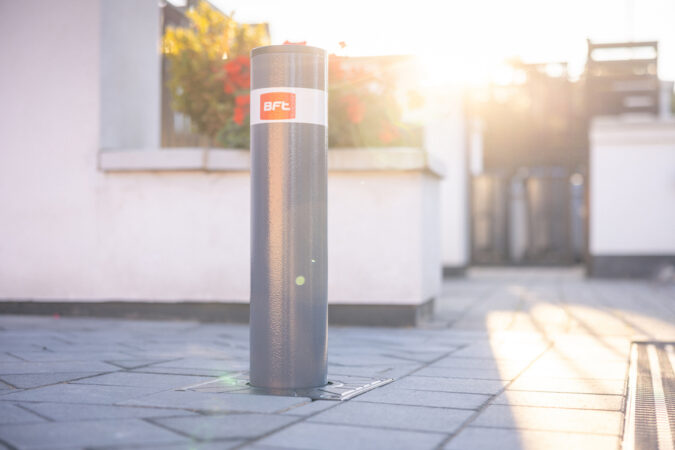
The STOPPY B 115/500 is also the smallest such driveway bollard that BFT has in their automatic line-up. That “115” and “500” in the name represent the diameter and height of the bollard itself – specifically, the rod that rises and retracts to block your driveway. BFT does sell even larger variants of this driveway bollard, as well.
For example, there’s the 200/700 – which is around 200mm in diameter and 700mm in height. Although, for most residential units and housing zones, the smaller STOPPY B 115/500 like the one we have here is more than good enough. Granted, it’s worth considering the bigger units if you, as an example, need to secure a warehouse, or want to keep high-ground-clearance vehicles like lorries from being stolen.
In my case, all I needed was a couple of driveway bollards to keep my home driveway secure, so there’s no need to spring up for the chunkier units. In your scenario, it might otherwise be preferable, depending on a variety of factors… What kind of vehicle do you intend to keep in (or out), as well as where you’re thinking of installing one, or how large the driveway (or road) is that you need to secure, among other variables.
Why Spending The Extra Can Make A Difference
As for me, BFT and their STOPPY B is my personal choice for driveway security that I like and rely on. If you’re also considering upping your home’s driveway security with a set of bollards like these, BFT is definitely my go-to choice and recommendation. There are, of course, some caveats to think about. Sure, products and solutions like these aren’t cheap.
Then, there’s the installation costs, which, combined, could rack up a large bill. But then again, if you’ve spent many thousands of pounds – let alone six-digit figures – on a car, that might be a worthwhile expanse for added peace of mind. And, ensuring that your car can’t be stolen that easily.
When you put that into perspective, and the potential money lost had your car been stolen otherwise, it’s a good idea to at least consider installing driveway bollards. As a motoring journalist myself, not only do I have my own personal car to protect. Aside from that, I’m also responsible for press cars that are loaned to me for a review. That too is at risk of being stolen, with a lot of extra complication in the aftermath.
Additionally, there’s a benefit to spending the extra on premium and superior quality brands like BFT and their STOPPY B driveway bollard. The alternative would be budget options that, sure enough, will only cost you a fraction of the money. The latter ought to perform well enough for the most part. But, what will you be compromising when it comes to ease of use, build quality, and how secure they are?
Strong Enough To Stop A Car From Being Stolen
When it comes to security-based products like the STOPPY B 115/500 driveway bollard, cost-cutting could be rather detrimental. After all, its intense research and development, let alone the high-spec engineering and design, will cost more. On the flip side, it does perform better in the long run, including its reliability in making sure the bollards work seamlessly, as well as its actual ability to stop your car from being stolen.
That’s something the STOPPY B 115/500 excels at. Those driveway bollards themselves are of the highest possible quality that you could get for residential areas. Plus, they offer pretty strong security. Specs-wise, the STOPPY B 115/500 is rated at 60,000 joules of force needed to break the bollards. Such force will permanently damage the bollards, but at least it’ll protect your car in the process.
That figure quoted there is called the “breaking force”. This is the amount of force needed to damage the bollards, but still have it maintain its shape well enough to stop a car from being looted from a driveway. Meanwhile, the “impact resistance” of the STOPPY B 115/500 is 7,000 joules. This is basically the amount of force that the bollards can withstand without causing any serious internal damage to the bollards.
So, this includes any damage done to its general structure or the primary actuation mechanism. That’s an impressive figure achieved by BFT, given that cheaper alternatives can sometimes only manage half of their impact resistance. Nonetheless, the STOPPY B 115/500 is highly secure not just in terms of its construction and robust design. But also, in regards to how you interact with it, and how it’s thus being secured.
Top-Notch Security And Protection, Inside And Out
Given that they’re automated, you’ll need to use key fobs, which will then prompt the bollards to rise out and block your driveway. Or, retract back down again, keeping flush with the ground. The transmitter in those key fobs uses the same sort of rolling code system that cars today use. This is where every time an interaction is made between you and the bollards, a brand-new and tough-to-crack code is generated.
These security codes will then sync and authenticate between the key fob and transmitted on your side, as well as the control unit and receiver that’s mounted somewhere in the house. Such obfuscation techniques of regularly generating new strings of codes are a great way to deter thieves. Rather than simply re-using a singular code, again and again, it’s much harder to pin down and try to replicate any rolling codes.
This is a genuine concern among those simpler bollards that only use one security code. A thief could more than easily use a scanner tool from far outside your home, scan that singular security code when you go to use the bollards, and then re-transmit that same code from a makeshift key fob to hack their way into your bollard. This is why you need more advanced and modern security systems like the STOPPY B 115/500.
Now, the other key benefit of automated electro-mechanical driveway bollards like a BFT STOPPY B, besides how secure and thief-resistant it is by default, is their general ease of use.
Far Easier And More Effortless To Use And Interact With
Most more affordable driveway bollards, which typically cost roughly a couple hundred pounds each (not including fitting), are manually operated. This means that anytime you need to raise or retract your driveway bollard, you’ll have to go to each bollard, bend down, and twist some sort of keys at the top… Thus, unlocking your bollards, before having to then pull or push each of the bollards in and out by hand, before using that key to lock them in place.
While it might not be overly strenuous work for some, having to step outside every single time or needing to lean down to reach the bollards can get pretty tiring after a while. It can also be especially challenging for folks with physical ailments or the elderly, given how cumbersome some of these manually-operated driveway bollards are. This is where offerings from BFT could aim to try and justify their higher prices.
As mentioned earlier, the BFT STOPPY B 115/500 is an automated, electro-mechanical driveway bollard. It doesn’t require that you have to step outside your car or home just to interact with it. No matter the time of day or the weather, you won’t have to get caught in your pyjamas, walking all the way through to your driveway in the middle of the night, just because you forgot to put up the bollards earlier.
Meanwhile, with the STOPPY B 115/500, all you need to do is press a single button on the transmitter key fob. With the STOPPY B 115/500, there’s a mere 7-second wait for the driveway bollards to rise or retract. When the bollards are up and in place, these are a massive deterrent for any thief that wants to break into your car and drive away with it.
Straightforward, Speedy, And Clean Installation Process
Primarily, driveway bollards like the ones that BFT offers, are incredibly strong. Particularly, it’s enough to stop a car from passing through or trying to run it down. They are also more effective compared to a gate, given that some gates could be pulled down surprisingly easily.
So, what about the installation, and what sort of work is needed to be done on my driveway? The process of installing a driveway bollard, first of all, requires that holes are dug up where the bollards could then go and retract into when not in use. You’ll then need to wire up the driveway bollards to your home to supply it with power. In this instance, the STOPPY B 115/500 will require somewhere around 300W each.
Moreover, all that cabling then goes to a central controller and receiver unit. Most likely, this might entail digging a trench underneath your driveway, inserting a pipe in the ground, and running its cables through then. Once it’s done, the installation process can proceed to the next step; installing the driveway bollards. When that’s complete, you’ll need to get that sync up to a key fob or transmitter unit to control them.
It’s completely automated, so it works similarly to car keys… Press one button, and the bollards will raise to protect your cars and driveway. Then, another press will retract them back into the ground, allowing you to move in and out of your driveway, as per usual. While we’re at it, it’s a good time to give a rundown of all the different components that were required to be installed in my driveway, for the bollards to work.
Can The BFT STOPPY B 115/500 Justify The Cost?
First up, my set-up required the installation of not one, but two BFT STOPPY 115/500 driveway bollards. I needed two bollards, given that my driveway is wide enough that a single unit wouldn’t be enough. When that’s all in good order, I needed something to make those bollards tick. To do that, I had to install one of BFT’s PERSEO CBE control units, which is installed inside my house, not on the driveway outside.
The control unit and receiver here are basically responsible for accepting commands from your key fob transmitter. Thus, controlling the opening and closing phases of the driveway bollard cycles when in use. Essentially, whether you want the bollards to rise up and secure your driveway. Or, have it retract into the ground when you need to drive in and out of your driveway. A single unit controls the two bollards.
In addition to that, I procured four MITTO B RCB02 key fobs. This is that aforementioned rolling code transmitted key fob – which sort of works the same way as the key fobs in a car. There are just two simple buttons. You could easily use these from inside your car or your home.
The signal itself is capable of reaching as far as 50m to 100m away. On top of that, it offers the maximum level of security possible among commercial driveway bollards like the BFT STOPPY B 115/500. It uses that highly secure and encrypted signal and rolling code tech that we mentioned earlier. Therefore, this makes it nigh on impossible (or at least, quite difficult) for thieves to simply copy and clone the remote codes.
Should You Consider High-Tech Driveway Bollards Like These?
By far, the latter points make up the biggest drawback of the BFT STOPPY B 500, and other similar high-tech and highly secure automated driveway bollards… They is a huge amount of work for all that piping and wiring to get the bollards installed. These will add up the cost even more if your driveway is a fair distance away from your home, where longer wires, cables, and piping will be required.
That’s not to mention the cost and effort of having to dig a hole or two in the ground, where the bollards can retract into. This is by far the biggest cost factor that you have to account for. Now, if your driveway is narrow enough with walls around the main entrance, you might be able to get away with just one bollard. However, if your driveway is a tad wider – like mine – you’ll need at least two.
Moreover, the holes themselves are quite deep. Even though the bollards (like the STOPPY B 115/500) are a smidge under 500mm or 50cm tall, the actual hole needs to be at least or around 1 metre deep. The folks who’ve dug the hole will also need to fill them in with gravel for sufficient drainage. This is to ensure that water can drain through your driveway bollards quickly and safely, without damaging the electronics and electrics.
Though, at least BFT’s bollards are rated for IP67 water resistance. Then, there’s the cost of installing the control panel, and ensuring it’s sync’d up with the key fob. Still, while the cost could be quite substantial, it’s the best form of driveway security that money can reasonably get on the market today. It’s not only easy to use, but also reliable and highly secure.
Who Should I Contact To Help Install These Bollards?
It’s worth mentioning here that while BFT Automation is responsible for designing and engineering these STOPPY B 115/500 driveway bollards and other similar solutions, the installation of the bollards is done by a different company. In my case, there are the good folks over at Bollard Security, which I’ve contracted to work on my driveway. So, everything I’ve covered thus far about the installation is done by them.
That entails the entire process of digging up the holes for the driveway bollards. Then, wiring them all up to that central control unit, and setting up the key fobs. Finally, they then put all the bollards in place for me. If you’re interested to learn more about Bollard Security, what they do, what they offer, and why I do think that they’re the best company in the UK to do this kind of work, check out my coverage here.

